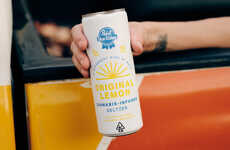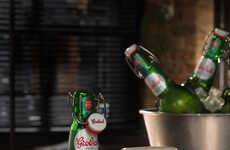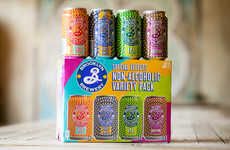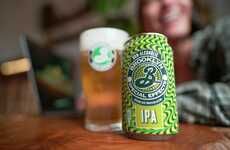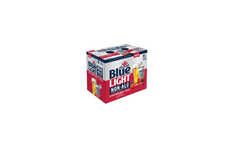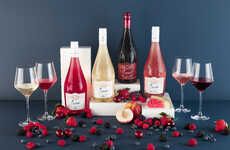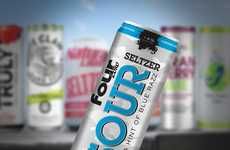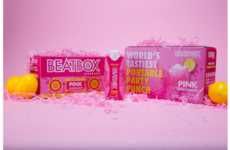
Pabst Blue Ribbon Beer is Now Available in PBR Non-Alcoholic & PBR Extra
Laura McQuarrie — April 5, 2019 — Lifestyle
References: pabst-blue-ribbon.prezly & thetakeout
Last year, Pabst Blue Ribbon debuted a low-calorie lager called PBR Easy and it is now following up this release with two all-new Pabst Blue Ribbon beer products that sit on opposite ends of the spectrum when it comes to alcohol content. The two new lagers include PBR Non-Alcoholic and PBR Extra, which takes the form of a beer that comes in at 6.5% ABV, which is slightly more than regular PBR at 4.7% ABV.
While PBR Non-Alcoholic is being introduced as an easy drinking option for the daytime, PBR Extra offers a strong yet light and crisp option for those who are looking for an alternative to heavy drinking beers. With many consumers seeking out no- or low-alcohol products, as well as higher ABV options for certain occasions, these new products help to suit a range of needs.
While PBR Non-Alcoholic is being introduced as an easy drinking option for the daytime, PBR Extra offers a strong yet light and crisp option for those who are looking for an alternative to heavy drinking beers. With many consumers seeking out no- or low-alcohol products, as well as higher ABV options for certain occasions, these new products help to suit a range of needs.
Trend Themes
1. Abv-adjusted Beers - Breweries adjusting their beer's ABV content to suit diverse consumer preferences and needs.
2. Low-alcohol Beer - Rising demand for low-alcohol options spurring innovation in the beer industry.
3. High-abv Beer - Growing interest in high-ABV beers leading to brewery experimentation and production.
Industry Implications
1. Brewing - Breweries can adjust their beer's ABV to appeal to a larger audience with diverse preferences.
2. Alcohol Manufacturing and Distribution - Manufacturers and distributors of low-alcohol and high-ABV beer products are seeing increased demand from consumers.
3. Hospitality - Restaurants and bars can offer a wider variety of beer options to appeal to different consumer preferences and needs.
3.4
Score
Popularity
Activity
Freshness


